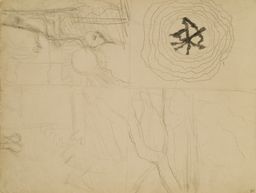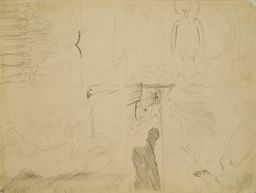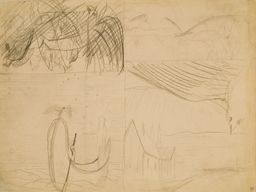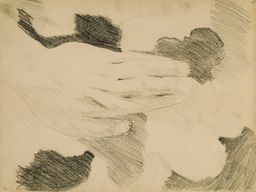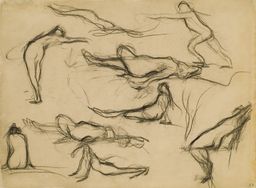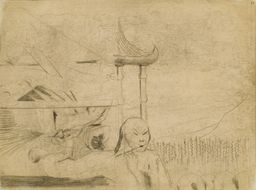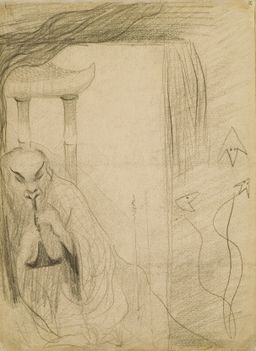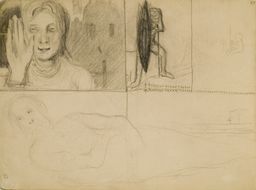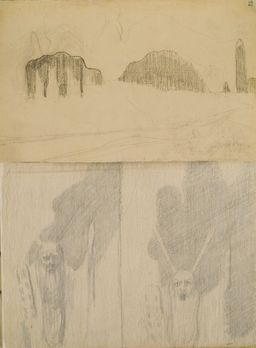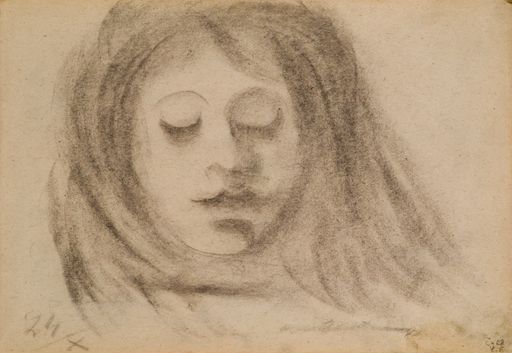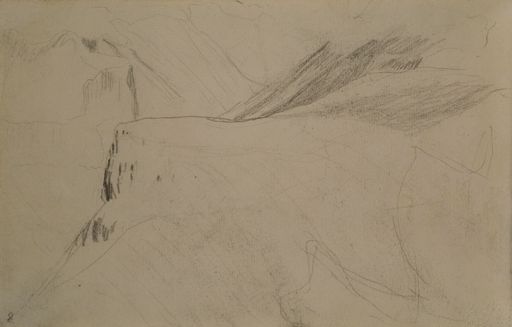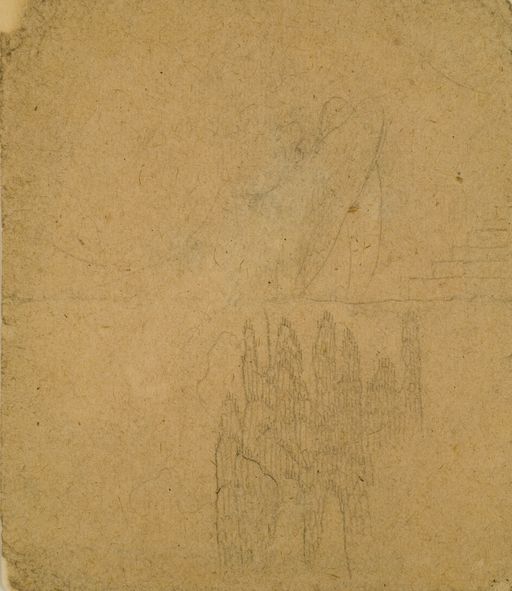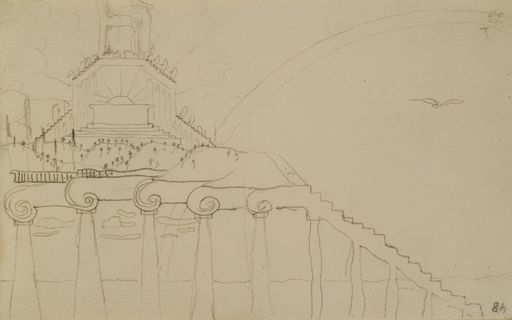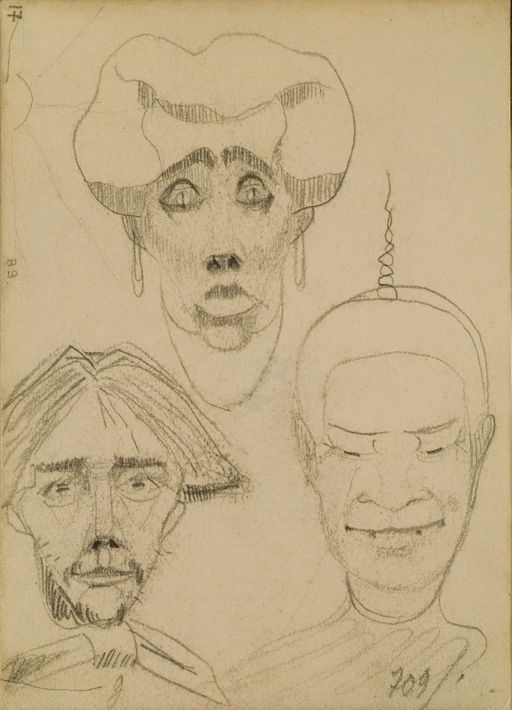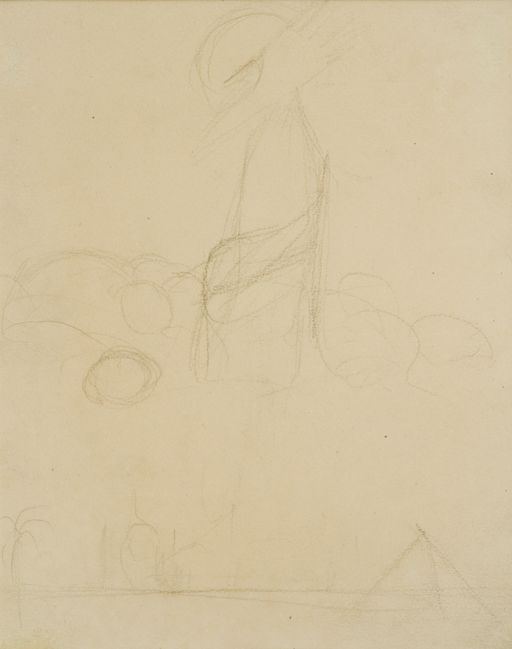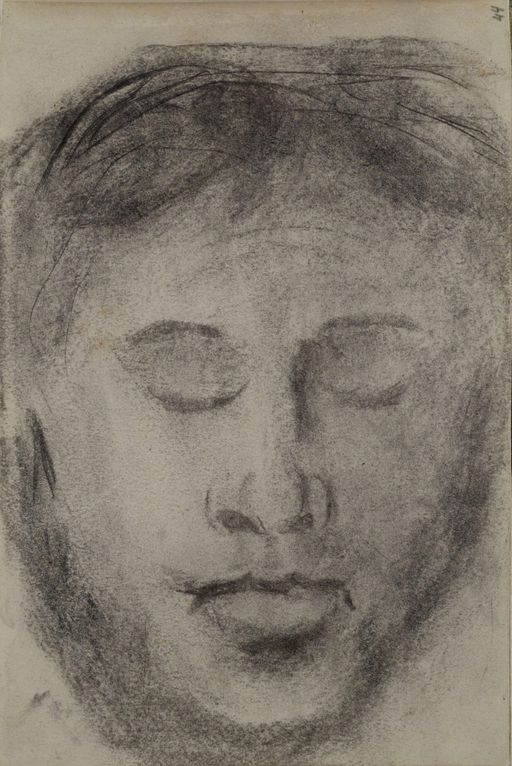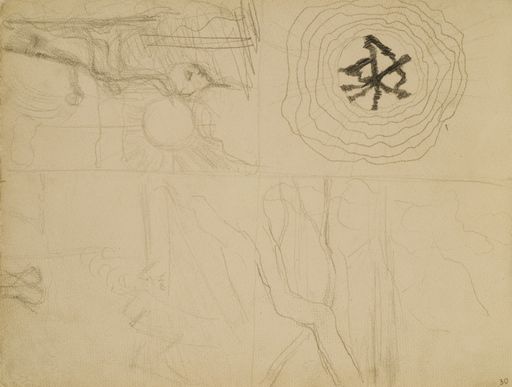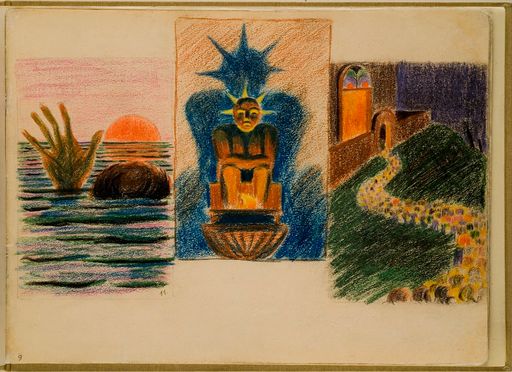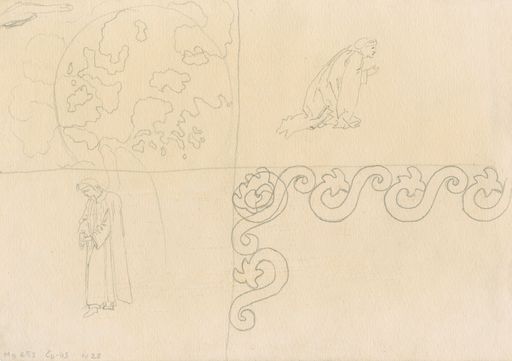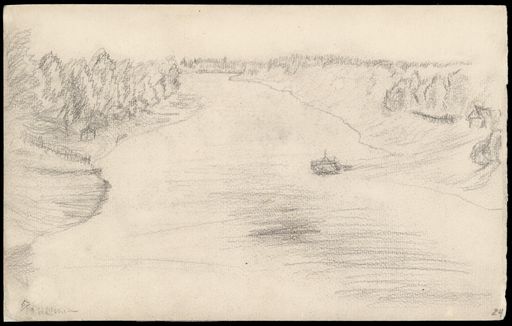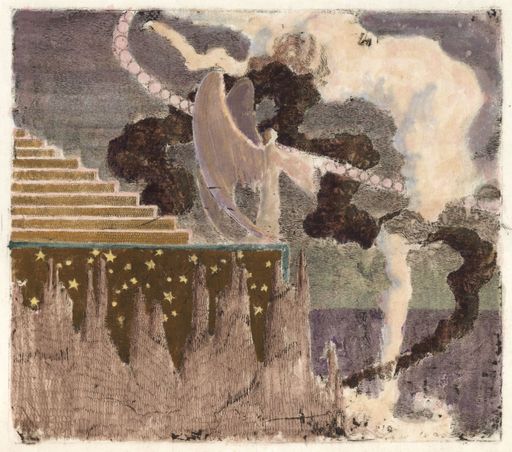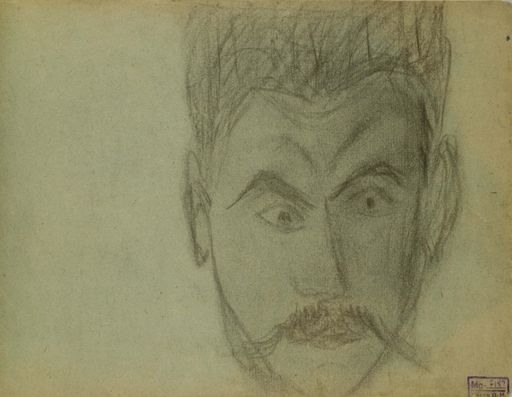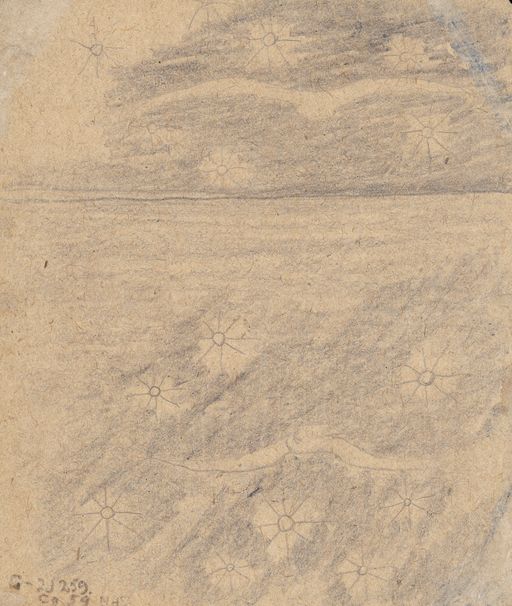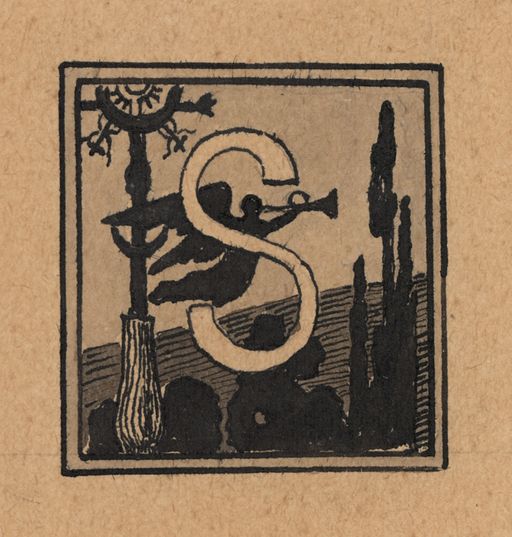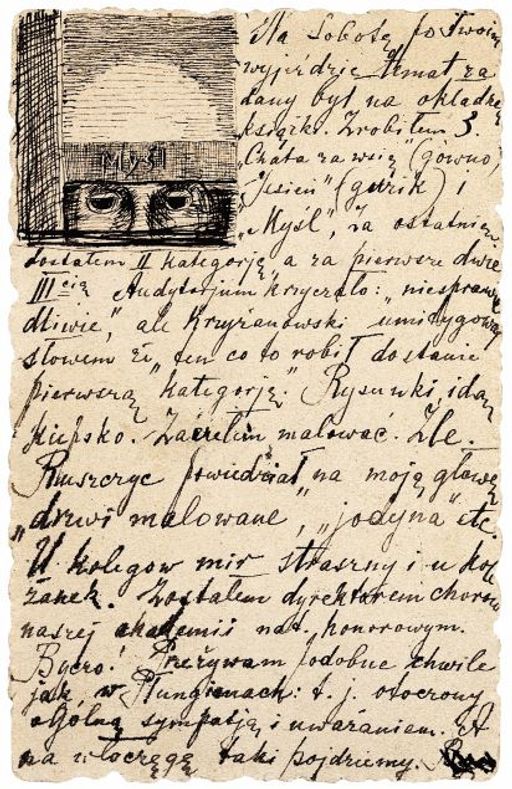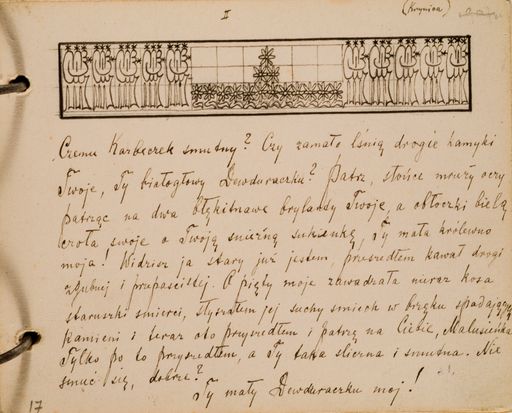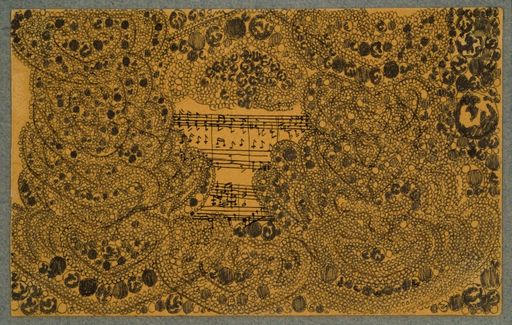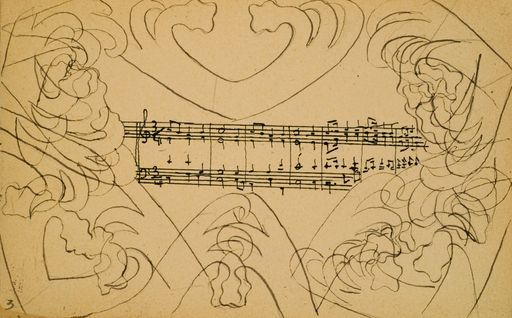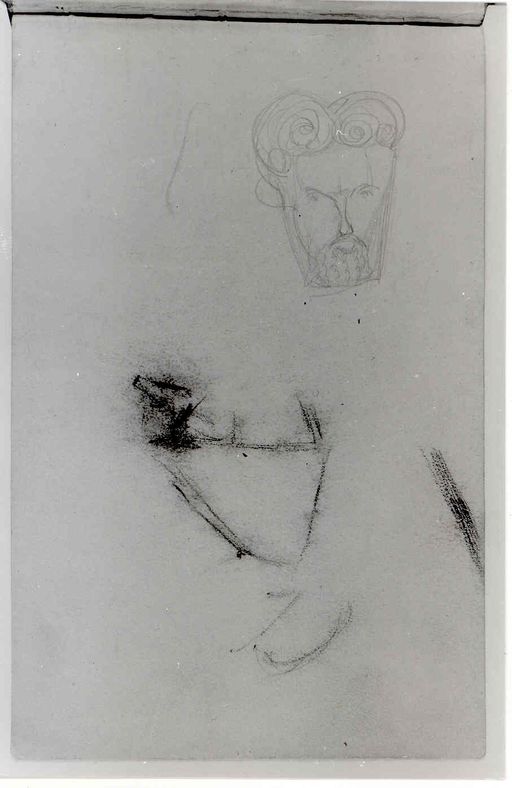Graphics and drawings
Compositions, Indian ink (part of which is book graphic design), 1902–1909. That is a traditional term for thematic or ornamental compositions produced with Indian ink on paper using pen or brush, and often diversified with diluted Indian ink, sometimes bronze or pencil texture. Executed with utmost scrupulosity and finesse, they display constructivist element and monumental expression of the philosophical idea despite their small format. Some of the ornamental compositions were created to decorate Sofija Čiurlionienė’s book In Lithuania. Some of these works were exhibited for the first time in 1911, others in 1925 or later.
The group of Indian ink compositions involves 17 works, of which major part is housed in M.K. Čiurlionis National Art Museum, and few others in Sofija Čiurlionienė’s Foundation.
Postcards drawn by M.K. Čiurlionis, 1903–1904. These are postcards he sent from Warsaw to his brother Povilas in Vilnius. The front side displays thematic compositions of philosophical nature executed in pastel, tempera, watercolour, Indian ink or pencil. Known are 10 from those he mailed. They have been exhibited since either 1985 or 1989. All of them are kept in M.K. Čiurlionis National Art Museum.
Fluor etchings and monotypes, 1905–1908. These are landscapes and works of philosophical nature printed using glass matrix coated with wax, etched and eroded with fluorine-hydrogen. Sometimes the same matrix was used for several prints, often coloured ones and some even coloured with brush. This technique was a novelty at the time. Devised by Professor Tadeusz Estreicher in Krakow in 1902, it was inexpensive, but not durable thus was used for a short period of time.
At the request of Feliks Jasienski, a collector from Krakow, Warsaw Art School published the book of fluor etchings (exhibited at the National Museum in Warsaw in 2001), which included Čiurlionis’ Snow Covered Village (etching No III-2213-2224, the library of the National Museum in Krakow).
Some of the fluor etchings were exhibited for the first time in 1906–1907. His posthumous exhibition in 1911 featured 32 of them.
Čiurlionis presented the glass matrix for The Offering (that has survived) to the Society of the Lithuanian Art wishing to amuse the Society’s more active members with its prints.
Characteristic of these works is subtleness and lightness of lines, tones and colours. Catalogue introduces 38 known prints produced with 23 different matrixes. One of them is known only from the photo.
Vignettes and Initials (book graphics), 1908–1909. The chapter includes 16 initials (known to scholars) and 10 vignettes. Since five initials were lost, but their prints existed in the book Galaunė, 1938, they are introduced as photos. In his memoires M.K.Čiurlionis’ brother Stasys mentioned that the artist produced a bigger number of them.
Čiurlionis worked on the vignettes in 1909, when the Society of the Lithuanian Art decided to publish a collection of his arrangements of folk songs. However, the volume was never published. Executed in Indian ink and diluted Indian ink using pen and brush, the vignettes display a unique interpretation of the Lithuanian folk ornamentation. The have been exhibited since 1911.
The initials have been displayed in exhibitions since 1911. However, in this and other exhibitions not more than 16 were shown, thus it is possible, that all the initials are known to scholars or, some if any have disappeared before 1911. The initials were designed for In Lithuania, the book compiled by Sofija Čiurlionienė, but, according to Čiurlionienė’s statement to Čiurlionis Gallery in 1922, remained unused.
Milda Kulikauskienė
